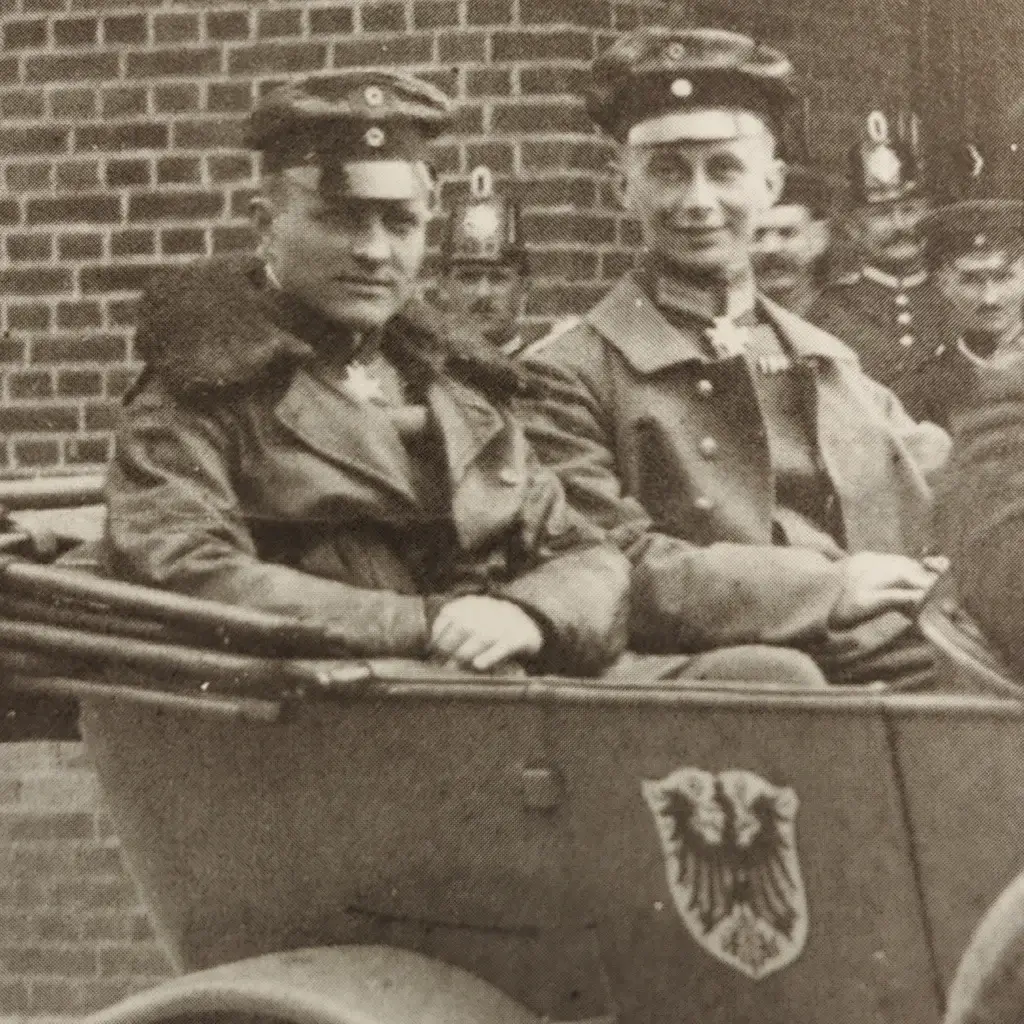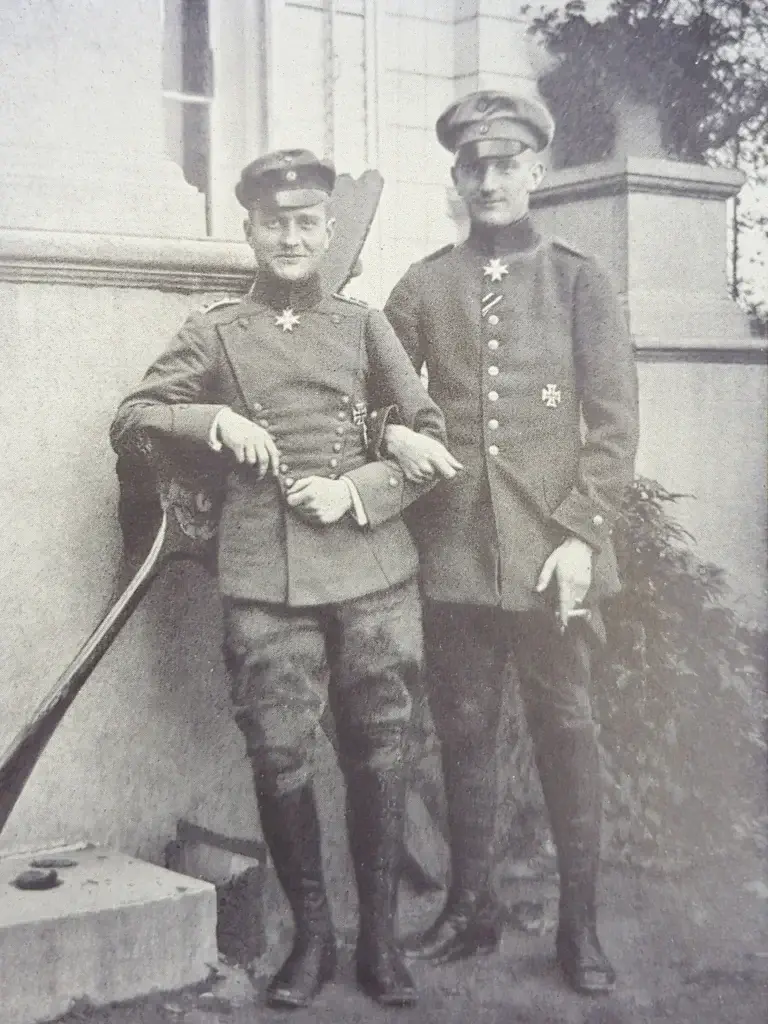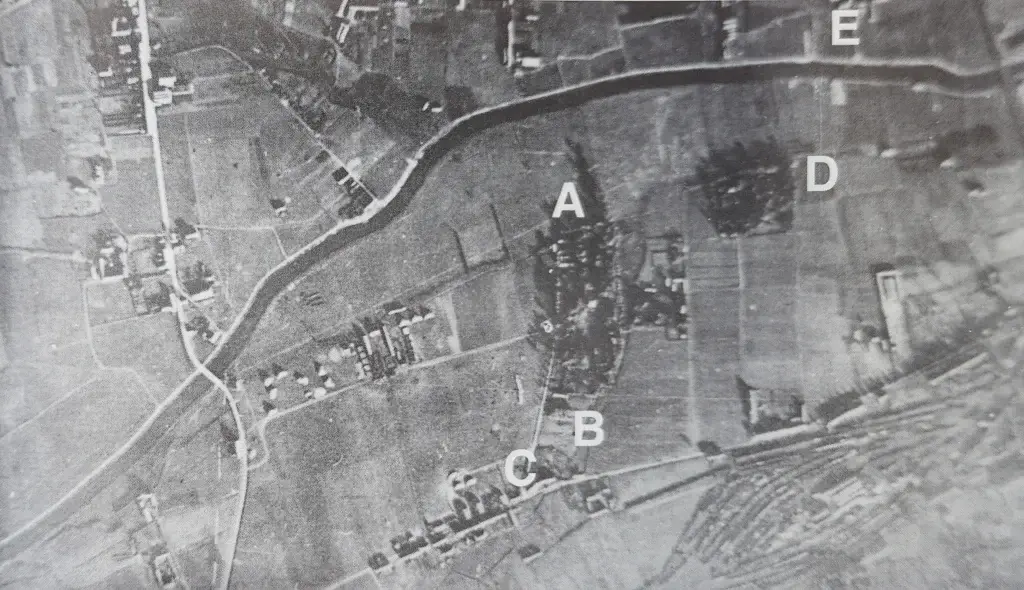JG I Meeting
Event ID: 413
Categories:
02 July 1917
Source ID: 58
The baron leads the first squadron that the army has ever set up. Previously there were only squadrons. Now four squadrons are grouped together. They are based here at Marckebeeke Castle and in the immediate neighbourhood. Squadrons 11 and 4 are located in the castle itself and in the monastery buildings. Richthofen brought Squadron 11 with him, he was its leader and it remains his ‘regular squadron’. He flies with it, he lives with it, he dines with it, and they are his old comrades, he knows each of them inside out. Fighter squadron 6 is with Bisseghem, fighter squadron 10 with Marcke.
Once the squadrons are all together on the airfield, there are 12 aircraft behind each squadron leader. There are only two types of aircraft, either Albatros D 5 or Pfalz D 3. The squadron looks very colourful. The main squadron 11, with which Richthofen flies, has the aircraft painted red, squadron 10 yellow, squadron 6 has black and white zebra stripes and squadron 4 has a black serpentine line around the natural-coloured fuselage.
The purpose of this colourfulness does not need to be explained at length: You can tell the squadrons apart in the air. And since each pilot also has a special sign attached to his machine, it is possible to know immediately who is in this or that aircraft.
On the evening of 2 July, the commander invites the leaders of the fighter squadrons to a meeting in his room on the first floor. Everything is still bare and uncomfortable. Moreover, not all the rooms in the castle are available, because the Count, who is the lord of the castle here, would prefer to blow up the whole flying club, and since this is not possible for him, he at least blows up every polite relationship with his surly unfriendliness and keeps as many rooms locked as possible. The cavalry captain, for his part, patiently watched this inhospitable spell for a few days, then it was changed.
While outside in the corridors the orderlies and lads rush up and down incessantly to bring order to the disorder of the entry, inside the room the meeting begins. It is crucial for the work of the field army’s first fighter squadron.
The four squadron leaders stand in front of the commander and his adjutant. Jagdstaffel 4: Oberleutnant von Doering, 17th Dragoon from Ludwigsluft in Mecklenburg, a proven squadron leader with a number of kills behind him. Committed, amiable, correct.
Jagdstaffel 6: Oberleutnant Dostler, Bavarian pioneer, old war school mate of Adjutant Bodenschatz, stocky, massive, broad-shouldered, with a firm but amused touch of commiseration.
Fighter squadron 10: First Lieutenant Freiherr von Althaus, who holds the Order Pour le mérite, a cavalryman (fighter aviation is teeming with horsemen), somewhat taciturn that evening. His squadron has had a bad few days. It has been terribly battered and has suffered bitter losses.
Jagstaffel 11: Lieutenant Wolff. At first glance, all you could say about him was ‘delicate little flower’. A slender, thin figure, a very young face, the whole demeanour shyness and more shyness. He looks as if he could be flipped backwards over his heels with a harsh word. But beneath this friendly schoolboy face dangles the Order Pour le mérite. And those modest eyes have so far knocked 30 enemy aeroplanes out of the sky, set them ablaze and sent them crashing to the ground over the front and rear sights of his machine guns. This slender boy was one of the best men in the old Richthofen 11 squadron. That he is now their leader – of course…
‘The commander gives his instructions in a clear sequence. Firstly, he no longer wanted to take the risk of getting take-off orders in a roundabout way via the various command centres. He would follow the enemy air activity in front of his section to the letter. For this reason, he ordered direct connections to be established with the front line immediately. He also demanded a ring line to his four squadrons so that when he picked up the phone, all four would report simultaneously.
Dis se Numero one. To this end, the Rittmeister communicated the ground situation and it was not pleasant to hear.
The enemy’s attempts to break through were repeated with a tenacity never before experienced and each new attack was more brutal and bitter than the previous one. The troops who have to endure these berserker assaults suffer immensely under a barrage that never ceases. And when, surprisingly, there is a lull in the firing, whole clusters of bomber squadrons howl into the hinterland.
This is the situation on the ground, and the task in the air for Fighter Wing I is self-evident: Destroy the infantry planes, destroy the fighter planes, destroy the bomber squadrons.
The commander has spoken. There is no question among the gentlemen. The situation could hardly be clearer. Only Oberleutnant von Althaus asks for the best men to be assigned to him, as he has lost his best men. The commander promises him good replacements.
The meeting is over. The Rittmeister and his adjutant go to Squadron 11 for dinner.’



Comments (0)